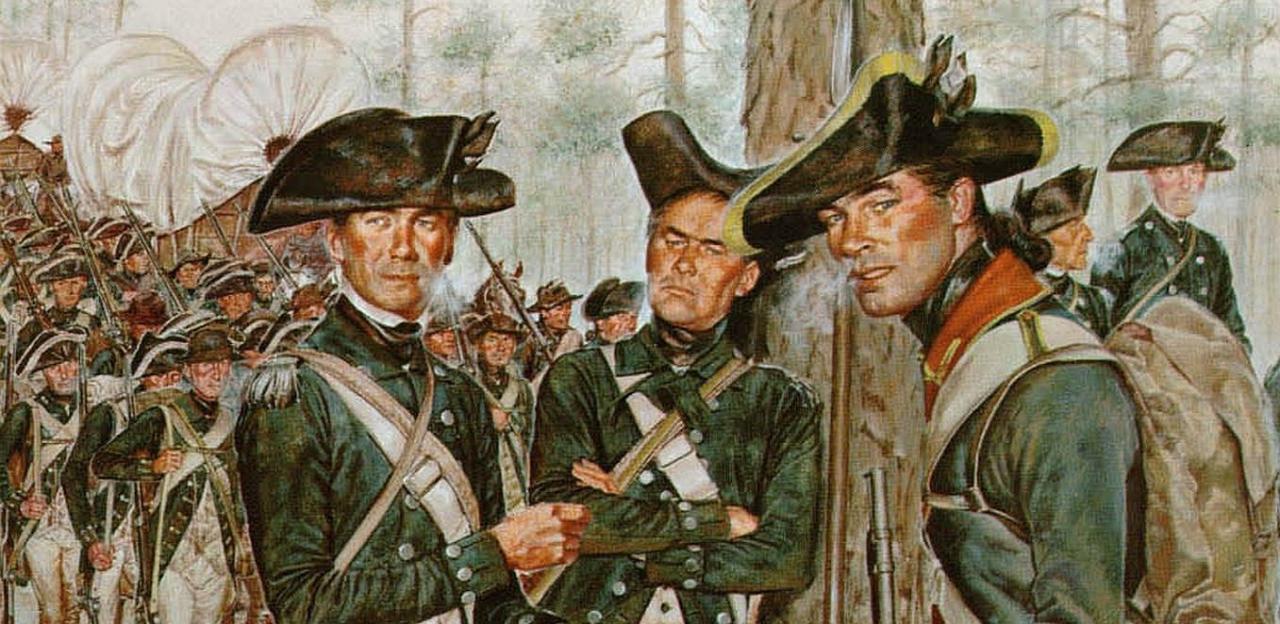
“Revolutionary War Pension Records Restored, Consolidated, and Explained. Part Two” By Lloyd DeWitt Bockstruck
Editor’s Note: Lloyd DeWitt Bockstruck’s groundbreaking book, Revolutionary War Pensions Awarded by State Governments 1775-1874, the General and Federal Governments Prior to 1814, and by Private Acts of Congress to 1905, identifies and recreates the Revolutionary War pension files generated prior to the disastrous fire in the War Department on 8 November 1800, and a second and even more disastrous fire on 24 August 1814 with the British invasion of Washington. Mr. Bockstruck has not only identified many of those pensioners whose files are commonly believed to have been lost but also reconstructed in varying degrees their contents. More than 16,500 pensioners are featured in this work. The Introduction to Mr. Bockstruck’s book is a bibliographical essay that both explains the legislative and archival history of the Revolutionary War pensions and identifies the existing sources–primarily the pension records of the Original Thirteen States and various Congressional sources—that the author utilized in this massive attempt at evidentiary reconstruction. This article, the second of two installments, is excerpted from that Introduction. To read the first part of the article, CLICK HERE.
“Due to the 8 November 1800 fire in the War Department in Washington, D.C., which destroyed almost all of the pension files submitted before that date, there are pension files bearing the notation “Dis. No. Papers” that were created from pension claims submitted for approval to Congress between 1792 and 1795. They are listed in the American State Papers, Class 9, Claims. There was a second fire in the War Department 24 August 1814, which destroyed the pension files submitted within the first fourteen years of the nineteenth century. Some of those pension files were also partially recreated and also bear the notation “Dis. No Papers.” Such files contain the name of the veteran, unit, date of enlistment, nature of disability, residence, and amount of pension. In the micro-publication Letters Received by the Secretary of War, Main Series, 1801–1870, M221, are some letters of inquiry about eligibility for pensions, replacement of lost pension certificates, &c.
Army and Navy Pension Laws, and Bounty Land Laws of the United States, Including Sundry Resolutions of Congress, from 1776 to 1852: Executed at the Department of the Interior with an Appendix, Containing the Opinions of Attorneys General of the United States, with the Decisions, Rules, and Regulations Adopted by Different Secretaries Relative to the Execution of Those Laws (Washington, D.C.: Printed by Jno. T. Towers, 1852) by Robert Mayo and Ferdinand Moulton remains an important source for ascertaining the existence of pension files before the two fires. Another one is Resolutions, Laws, and Ordinances Relating to the Pay, Half Pay, Commutation of Half Pay, Bounty Lands, and Promises Made by Congress (Baltimore: Genealogical Publishing Company, 1998).
At various times Congress requested lists of pensioners, and these reports have been printed. These lists augment the other fragmentary records and provide data not available elsewhere. The pension report for the year 1792 is the second volume of House publication Reports War Department 1st Congress, 3rd Session to 2nd Congress 2nd Session. It contains the names of 1,358 pensioners. Seven reports between 1794 and 1795 are in Senate publication War Office Returns to Invalid Claims. The 1796 report first appeared in print in Mary Govier Ainswoth’s “Recently Discovered Records Relating to Revolutionary War Veterans Who Applied for Pensions under the Act of 1792,” National Genealogical Society Quarterly, XLVI (1958) 8–13, 73–78.
A Transcript of the Pension List of the United States of 1813 (Baltimore: Genealogical Publishing Company, 1959) is extremely significant because it was the last one to appear prior to the fire of 1814. It contains the names of 1,766 pensioners, not all of whom, however, were Revolutionary War veterans. Of course, many pensioners were already deceased by 1813. The U.S. War Department’s Pension List of 1820 (Baltimore: Genealogical Publishing Company, 1991) contains the names of more than 15,000 pensioners. In order to replace the papers and applications submitted after 1800 but destroyed in the fire of 1814, Congress issued The Pension List of 1835 (Baltimore: Genealogical Publishing Company, 1835, 1968). The four-volume set has been greatly enhanced by the addition of indexes.
A Census of Pensioners for Revolutionary or Military Services; with Their Names, Ages, and Places of Residence, under the Act for Taking the Sixth Census, Bound with a General Index (Baltimore: Genealogical Publishing Company, 1974) contains the names of pensioners—both veterans and their widows at the time of the 1840 census. Some of these pensioners had been on the rolls prior to the fire of 1814. Others were state pensioners. By no means, however, were all of these individuals veterans of the Revolutionary War. Other pension lists include Letter from the Secretary of War, Communicating a Transcript of the Pension List of the United States (1817). It contains the names of about 1,000 pensioners and 300 half-pay pensioners. Pensioners of the United States, 1818 (Baltimore: Southern Book Company, 1959) has 5,900 pensioners and The Pension List of 1820 (Baltimore: Genealogical Publishing Company, 1991) has 17,000 pensioners.
The final payment vouchers found in Record Group 217 of the Treasury Department include a few invalid pensioners approved prior to 1814. The vouchers for the states of Georgia and Delaware have been microfilmed. Those for the District of Columbia, Louisiana, Maryland, Mississippi, New Jersey, Pennsylvania, Rhode Island, South Carolina, and Virginia have been published.
Perhaps as many as a few hundred state bounty land recipients who do not appear in [my earlier book,] Revolutionary War Bounty Land Grants Awarded by State Governments (Baltimore: Genealogical Publishing Company, 1996), are also featured in this work.
African American pensioners include Scipio, John Busby, John Cary, Edward Chambers, Daniel Chavis, William Couch, Austin Dabney, John Francis, Pearson Freeman, Primus Hall, Peter Harris, Nero Hawley, William Jones, Valentine Locus, George McCoy, Paul Meacham, Richard Nicken, Stephen Philips, Cato Quasha, David Scott, Jeremith Smith, Caesar Thompson, John Tranus, Benjamin Vicary, Aaron Weaver, and Stacy Williams.
Women whose service qualified them for pensions were Elizabeth Bergen, Margaret Corbin, Rachel Fox, Deborah Gannett, Anna Maria Lamb, Sarah Sherwood, Elizabeth Thompson, Hannah Weston, and Rumah Williams.
American Indians include Daniel Eldridge; William Henry Kilbuck, a Delaware chief; and Peter Harris, a Catawba.
Pensioners identified as original members of the Society of the Cincinnati include Louis Baury, Robert Coltman, John Craig, John Davis, Bartlett Hinds, John Jordan, Seth Lewis, Peter Nestell, Gassaway Watkins, and William Williams.
Veterans who were in the Battle of King’s Mountain include Benoni Benning, William Campbell, William Carson, John Clark, Alexander Dennis, William Dudly, David Duff, James Dysart, Samuel Espey, Frederick Fisher, John Gribey, William Guest, John Hambright, Martin Hammond, Samuel Hammond, John Hicks, Peter Hilton, John Hollis, Pendleton Isbell, Samuel Johnson, John Kenseller, David Kerr, John Loggin, Stephen McElheney, James Merritt, Robert Miller, Thomas Moore, William Moore, John S. Polereczsky, Joseph Read, Benjamin Rowan, Robert Sevier, William Shaw, David Shipes, John Skeggs, Jonathan Tipton, Thomas Toms, Robert Walker, John Wilfong, and James Williams.
Although it was not legal for males under the age of 16 to serve in the war, there are a number of examples of service performed by boys younger than the minimum age. Examples include William Brown age 14, Christopher Cary, John W. Hunter age 13, Daniel Ingalls age 15, Samuel Jenkins age 15, Josiah King age 14, Thomas King age 15, Elizur Kirtland age 14, Robert Lorimore age 15, Hampton Lovegrove age 11, Leslie Malone age 14 or 15, Judah Mandingo age 15, Michael Seitsinger age 14, George Seigler age 15, Josias Sessions age 12, James Shanks age 14, George Singly age 15 or 16, Jonathan Smith age 15, Roger Strong age 13, James Tinsley age 15, Gershom Van Voast age 14, Bartholomew Vorman under 15, Josias Vorman age 11, Conrad Widrig age 15, and Theophilus Wilson, who was born ca. 1767.
Revolutionaries born outside of the Thirteen Colonies include Robert Simmons from Great Britain; Alexander Dow, Daniel Sellers, and Arthur St. Clair from Scotland; John Brown, Richard Canfield, Charles Dowd, Henry Dugan, Patrick Dunn, Joseph Ferguson, Kinley Hazlet, Patrick Leonard, Daniel McCarthy, John McCormack, John McMullen, Charles Proud, Robert Orr, James Scott, Alexander Tennant, Charles Teulon, and Henderson Wright from Ireland; and William Birchmore, John Jackson, Peter Robertson, and John White from England.
Charles Brimline, George Grau, Charles Fiere, John Lockmann, Anthony Shoppe, Nicholas Ferdinand Westphal, and Frederick Weissenfels were from Germany. John Baury was from Santo Domingo. From France were Lewis Ansart, John Anthony, Louis Joseph de Beaulieu, Philip Beccannan, John Brown, Maximin Claistrier, Francis Suzor Debever, Joseph Gowden, John H. Genther, John Hagie, Marc Antonie Fouquet, Nicolas Fouquet, Charles LeHoux, and Frederick Wolf. John Polereczsky came with the French troops.
The last Revolutionary War pensioner was Esther S. Damon, widow of Noah Damon, who received an increase in her pension by an act of Congress in February 1905. She died the following year.
Each entry [in Revolutionary War Pensions Awarded by State Governments 1775-1874, the General and Federal Governments Prior to 1814, and by Private Acts of Congress to 1905] contains the name of the veteran, the state of his or her service or residence, and details of service and family data consolidated from various sources. In some instances the evidence was insufficient for differentiating between individuals of the same name, or variations in spelling were so different that it was impossible to determine if there was a single pensioner. In such instances entries were left unconsolidated.
The sources for the individual states [far too numerous to be included here] are treated alphabetically by the Thirteen Original States plus the Green Mountain and Pine Tree states–Vermont and Maine. Kentucky and Tennessee also provided relief to selected Revolutionary War veterans living within their borders. The resources are discussed in alphabetical order for each locality [throughout the balance of the Introduction].”
For more information, or to purchase a copy of Revolutionary War Pensions Awarded by State Governments 1775-1874, the General and Federal Governments Prior to 1814, and by Private Acts of Congress to 1905, please click the following button.
Recent Blog Posts




